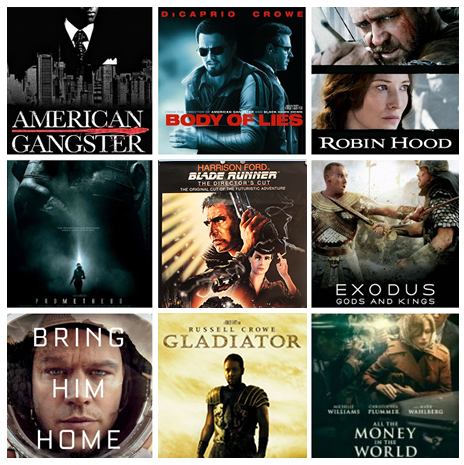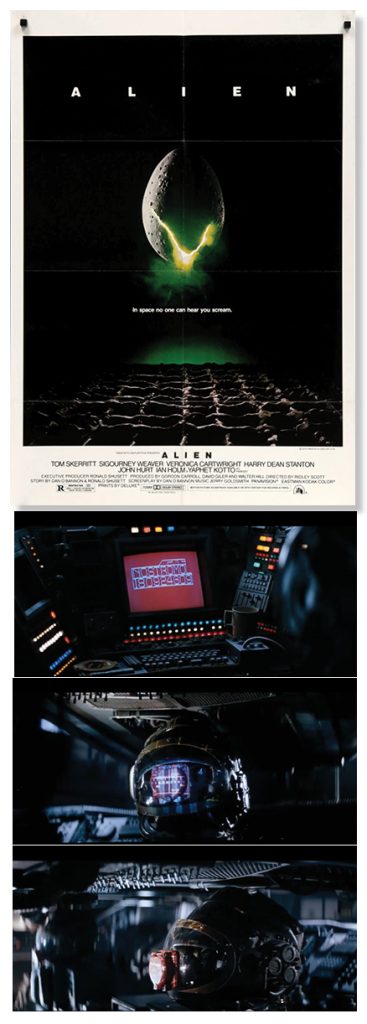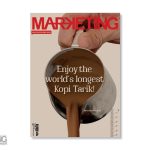By Paul J Loosley
Looking at Ridley Scott you may be forgiven for thinking the easy route to great directing is to thrust a nasty huge smoking cigar between your teeth and shout ‘action’. (Although director Michael Curtiz, he of Casablanca, said the secret was to, “sit on top of the camera and pant like a tiger”).
Well the Cubana certainly seemed to work, the amount of information Ridley as a director was (and still is) able to pack into a single scene was remarkable. Film scholars describe the component parts of a shot; cast, set, location, wardrobe, props etc, as mise en scène.
So, let’s see how smartly he did it.
Observe the accompanying clips from an apparently simple 30”, Hovis bread commercial, directed by Ridley in 1973.
A delivery boy brings some bread to the top of a hill then rattles back down the cobbled streets, past old workers’ cottages, riding an ancient bone-shaker bicycle. In the end scene the boy returns to the bakery.

In the remarkable final five second shot in the bakery (the whole spot is only 5 scenes) there is an unbelievable wealth of information. The period china, old pots and pans, the waistcoats and cropped baker’s hat, the short hair style all of which, at a glance, speak to the early 20th century rural England. The single-source lighting through a leaded window and the boy’s hat and scarf indicate a cold morning. These things, and the fact that the bread was hand-delivered signposts an ‘authentic’ bakery; not a jot of mass production or artificial ingredient. So, in one single scene Scott has communicated actual product properties of freshness, naturalness, taste and wholesomeness, and the emotional and engaging pleasures of a past when things were calmer and thought to be, at least in post-modernist terms – better. Fully justifying the advertisement’s final statement; “as good for you today as it’s always been”.
This is not visual vanity, it is based definitively, and possibly instinctively, on a conviction that one can place full trust in the viewer to be able to absorb impressions at greater speed and in greater detail than the reactionary mind might believe possible.

… This is not visual vanity, it is based definitively, and possibly instinctively, on a conviction that one can place full trust in the viewer to be able to absorb impressions at greater speed and in greater detail than the reactionary mind might believe possible…
Let’s face it, Ridley knew that swift communication and brevity in a single scene from a 30” TVC is vital to a successful advert.
Yet how did he bring that knowledge to the big screen I hear you ask.
Well, a case worth examining is the single opening scene on the flight deck of the spaceship Nostromo in Ridley’s second feature, Alien (1979). As the camera, in a single continuous shot, slowly explores the interior of the ship, we observe an unusual darkness in foreboding monochrome. The complete absence of people reveals a dehumanizing air of suspense enhanced by the incongruously neglected space helmets reflecting the computer screen.

Especially telling is an abandoned mug of coffee on the console. That it’s a very ordinary china mug, not some futuristic chrome or polycarbonate material which, in what is not just a director’s touch, signals a sense of realism and an incongruity in both its casualness and anachronism.
Overall an existential impression also exists where ‘something ‘bad’ had either happened, Mary Celeste style, or something bad was about to happen.
To conclude, film experts, David Bordwell and Kristen Thompson sum up Ridley’s communication skills, “these theories then, set the filmmaker the task of representing some historical, social, or aesthetic reality through the selection and arrangement of mise en scène”.
“these theories then, set the filmmaker the task of representing some historical, social, or aesthetic reality through the selection and arrangement of mise en scène”.
So, Ridley, born in the bleak mining world of North East Britain, learnt early that the devil was indeed in the detail. Thus, it was his attention to every single facet of a scene that he effortlessly transferred from the 30” TV spot to the major 2-hour+ feature film. And it was so successful it earnt him both a bunch of Oscars and a knighthood.
With perhaps a little help from his favourite Cohiba.
Next week. Part III. Adrian Lyne: ‘Get your kicks on Route 66’.
To receive your free subscription to Marketing’s WEEKENDER magazine every Friday, save 0122052588 in your phone and WhatsApp the message “WANT”. Check out the latest issue here.
MARKETING Magazine is not responsible for the content of external sites.









